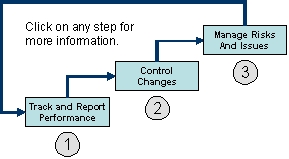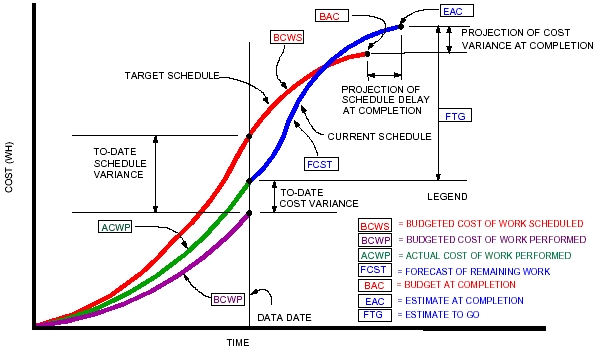
Once a project reaches the Execution and Control phase, a project team and all necessary resources should be in place or lined up to perform the project tasks at specific start and end dates. The project plan has been developed and baselined.
The project team shifts its focus away from discovery to participating, observing, and analyzing what is being done. The critical elements for the project management team are:
- Track and monitor project activities to measure actual performance to planned performance
- Review and communicate status and future actions
- Execute a change management process to control changes to the project's objectives, specifications and overall definition
- Execute an issue tracking process to ensure that there is a central repository for project issues that are addressed in a timely fashion
- Have in place a corrective action process to document and track plans to correct any issue that impacts the plan and which establishes guidelines for replanning
- Have in place an onging process to identify and manage project risks
These elements represent ongoing activities that occur throughout the life of the project.

Policy and Standards
All projects should:
- Use a Standard Project Process, as-is or as-tailored to meet project-specific requirements,
- Obtain approval for any project-specific tailoring of a Standard Project Process,
- Document any project-specific tailoring of a Standard Project Process,
- Perform project acitivities according to the project's Defined Process,
- Collect and store appropriate project examples and measurement data for future use,
- Use and maintain a documented and approved project development plan as the basis for tracking actual results and performance of the project,
- Keep the Project Manager informed of the project's status and issues,
- Take corrective actions, such as adjusting performance or adjusting the plans, when the project plan is not being achieved,
- Manage the corrective actions to closure,
- Make changes to the project commitments with the involvement and agreement of the affected groups, such as engineering, estimating, systems integration, testing, quality assurance, configuration management, contract management, and documentation support, and
- Ensure that senior management reviews all commitment changes and new commitments made to individuals and groups external to the organization.

Responsibilities
The responsibilities for Project Execution and Control are summarized below:
- Initiative Sponsors and Senior Managers are responsible for reviewing project status reports and providing guidance to Project Managers.
- Project Managers are responsible for overseeing the execution and control of the project
- Project Managers are responsible for preparing and delivering project status reports to senior management
- Project Managers are responsible for managing the day-to-day execution and control of the project, including performing risk management, issue management, and overseeing the activities of team members.

Templates:
![]() Project Status Report Buy Now
Project Status Report Buy Now
If you would like to order a full set of the Project Templates and Checklists
click here
Buy Now
